- Revenue Cycle Management
- COVID-19
- Reimbursement
- Diabetes Awareness Month
- Risk Management
- Patient Retention
- Staffing
- Medical Economics® 100th Anniversary
- Coding and documentation
- Business of Endocrinology
- Telehealth
- Physicians Financial News
- Cybersecurity
- Cardiovascular Clinical Consult
- Locum Tenens, brought to you by LocumLife®
- Weight Management
- Business of Women's Health
- Practice Efficiency
- Finance and Wealth
- EHRs
- Remote Patient Monitoring
- Sponsored Webinars
- Medical Technology
- Billing and collections
- Acute Pain Management
- Exclusive Content
- Value-based Care
- Business of Pediatrics
- Concierge Medicine 2.0 by Castle Connolly Private Health Partners
- Practice Growth
- Concierge Medicine
- Business of Cardiology
- Implementing the Topcon Ocular Telehealth Platform
- Malpractice
- Influenza
- Sexual Health
- Chronic Conditions
- Technology
- Legal and Policy
- Money
- Opinion
- Vaccines
- Practice Management
- Patient Relations
- Careers
10 Easy Plants to Add Color to Your Garden
Millions of mothers were given flowers on Sunday in celebration of Mother's Day. But beautiful blooms don't have to be an occasional delight. These 10 plants are as easy to care for as they are beautiful.
Gardening is one of the top hobbies for physicians. Between the accomplishments of working with your hands and the relaxation of getting outside, there are many benefits to working in the dirt. But, for many busy people, caring for complex organisms beyond your family can be challenging and time consuming.
Instead of letting your garden go to seed, try giving these plants a shot. The list was suggested by Thompson & Morgan, long time garden experts and suppliers in the UK. Some of these blooms are familiar, some surely have been part of kids’ spring projects, and some look wildly exotic. But they all grow easily, and are tough for even the brownest thumb to mess up.
Here are 10 easy plants to get your garden in bloom quickly:

A garden-center standby, pansies come in all colors and sizes of blooms. These hardy flowers are at their best in fall and spring; throughout most of the US, planting in September will result in color throughout the winter and spring. All pansies need is good drainage and partial sun. They’ll do the rest of the work. When shopping for pansies, look for smaller, compact plants with fewer blooms—they are younger and will last longer in your yard.
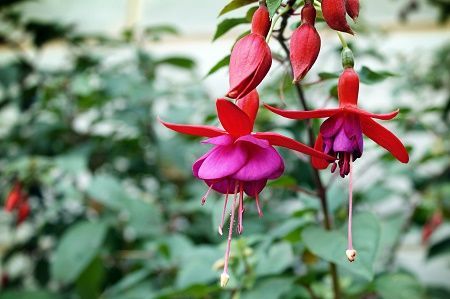
If you prefer hanging baskets to yard work, fuchsias turn any arrangement into an explosion of color. There is a variation of fuchsia for every climate and, like pansies, if you find the right variety for your area, are able to withstand pretty rough winters. The bright pink, orange, yellow, or purple flowers of the plant grow at the end of branches, so pruning regularly will help ensure lots of bright blooms. Otherwise, fuchsias are a common-sense plant; don’t let it get too cold, and don’t let it dry out in the summer.

Attractive ground cover is not necessarily the first thing people think of when planning out their garden, but an easy-to-manage perennial can be a gardener’s best friend. Geraniums are easy to plant, reproduce, and maintain, and their slight blooms will not overpower the rest of the landscape. As Fine Gardening says, all they need is “reasonably fertile, reasonably moist soil.”

Marigolds are particularly easy to grow, and their bright red, yellow, and orange flowers instantly brighten up any yard. In fact, the marigold is such an easy plant to grow, McDonalds has offered marigold seeds as part of Happy Meal toys on several different occasions. If a clown and an unclassified purple blob can grow them, so can you.
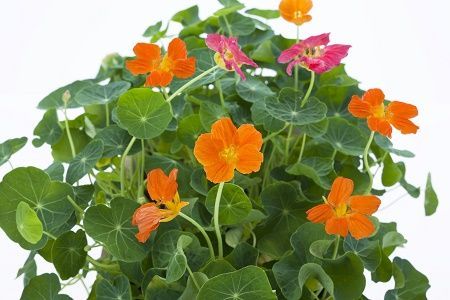
These beautiful, edible plants are not just easy to grow, but they actually thrive in less-than-perfect conditions. Farmer’s Almanac says not to fertilize these plants, as that will produce fewer blooms. The nasturtium blooms later than other plants, adding bright colors to the garden—and your salad—in the fall.
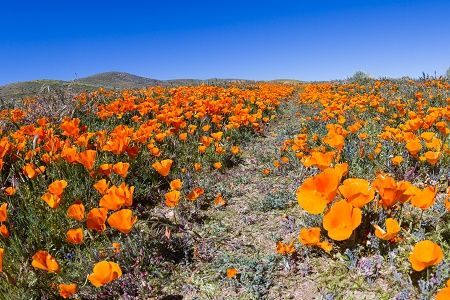
The perfect plant for those who forget to water regularly. The state flower of California thrives in dry climates. Seeds can be distributed freely, like a wild flower, and the flowers will continue to re-seed every year. Beautiful yellow, orange, and red flowers will pop up and respond to lots of sunshine and warm weather.

If your garden is more Northwoods than desert oasis, aquilegia will thrive beautifully. Also known as Columbine, this perennial has lovely light blue, periwinkle, and lilac colored blooms, and will continue to add new blooms as older ones are cut away. When tended to regularly, aquilegia will re-seed itself for the next year. These flowers are best started in small pots, then transplanted after the last frost.
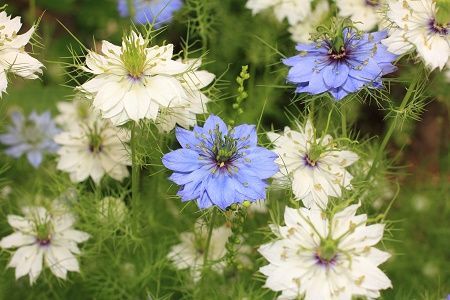
Another traditional wildflower, related to the buttercup. These flowers are very recognizable, with small ferns creating the “mist” around the blue blossom. The seeds of the nigella only need to be scattered and lightly patted down in order to grow. No trowel needed. The nigella does not like to be transplanted, so starting from seed is essential.
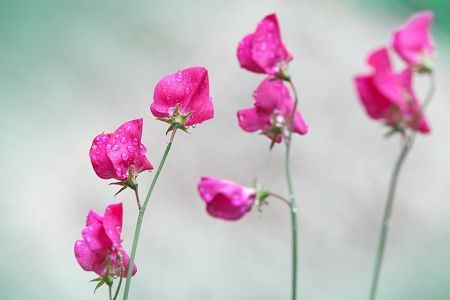
Big bunches of blooms and an irresistible bouquet make sweet peas a lovely addition to any garden. Difficult to start from seed, if you can find the plants already seeded at the garden center, all you need is some good soil and a trellis for them to climb on. To make it even easier to care for them, adding some mulch around the base after the plant has taken hold will help keep the soil moist and cool.

After the last frost, plant 2 or 3 seeds together every 4 inches, and watch your sunflowers grow, and fast! By planting several seeds in one spot, you’ll ensure germination, and eventually you’ll be able to pick the strongest ones to support and nourish as they reach toward the sun. Kids love sunflowers, particularly when the plant gets taller than they are! It does take 2 to 2 ½ months for the instantly recognizable blooms to open up, but it is so worth the wait for that burst of color. Just ensure these babies have plenty of sunlight!
